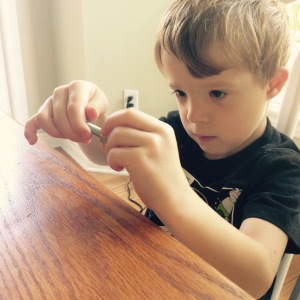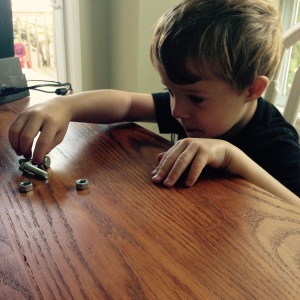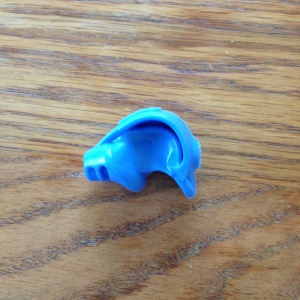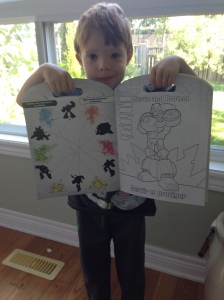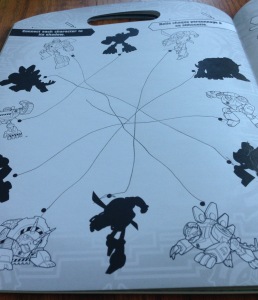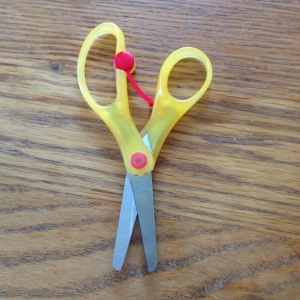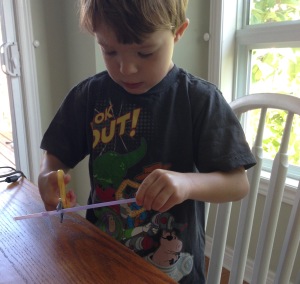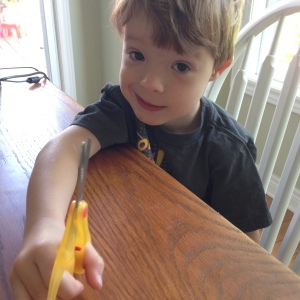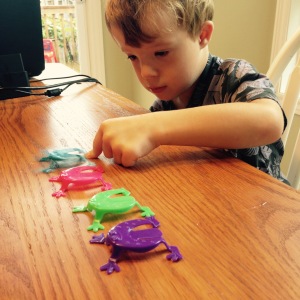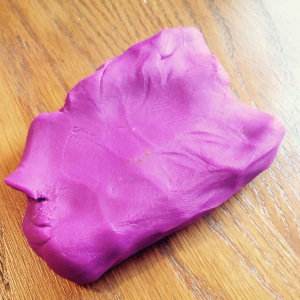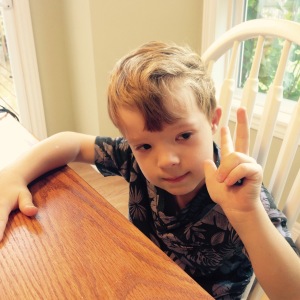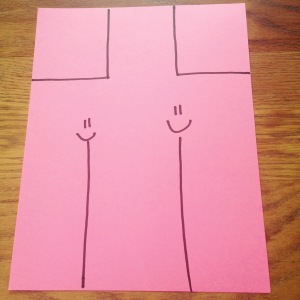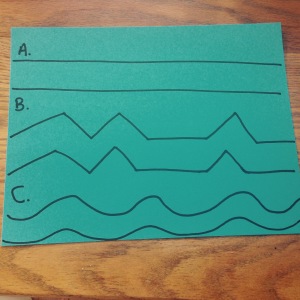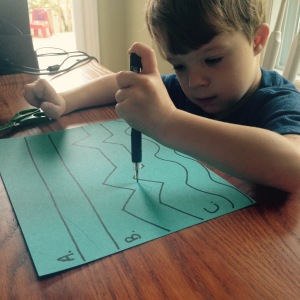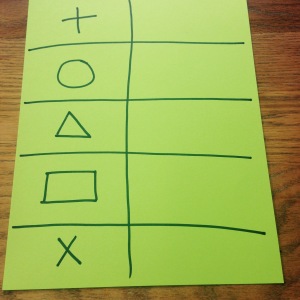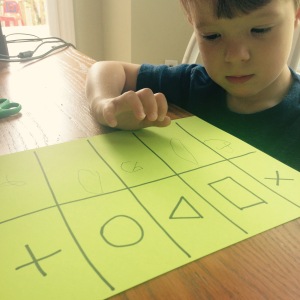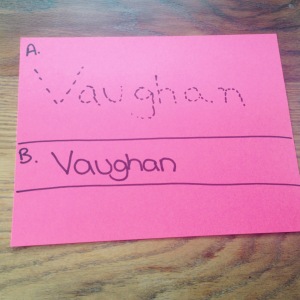So I’ve just been throwing up all of these tools, activities and exercises for V’s fine motor development without any real structure as to how we actually do them in our day to day lives. I should be clear that we do not spend hours and hours a day doing these ‘games’ because A) V would be hella bored and B) I have a 10 month old who doesn’t appreciate that much free time. The reason we have so many different games and activities is so that we can switch it up every day without doing the same things for the next year or longer if that’s what V needs.
Realistically we do V’s Occupational Therapy activities 5-7 times a week. If we’re home on the weekend (and during the summer we are usually on the go!) we’ll take time the morning to do his games before we take on the rest of our plans. Every time we do his exercises it takes about 20-35 minutes, depending on V’s choices for the day and is divided up like so:
|
Category |
Activity |
Time (in mins) |
|
Scissors |
Card-stock Exercise |
2 |
|
Straw |
2 |
|
|
Putty Snake |
2 |
|
|
Pre-Writing |
Dot-To-Dot/Maze |
5 |
|
Colouring |
5 |
|
|
Pencil Grip/Object Manipulation/Finger Strength |
Any 3 activities of V’s Choice (dice, coins, leapfrog, etc) |
5 |
|
5 |
||
|
5 |
The Scissors and Pre-writing activities are pretty set, however V can chose the activity book and page he wants to colour. The other activities he’s able to chose from our Occupational Therapy Kit. He gets pretty excited about all the options but definitely has his favourites! The only time I step in is if we’ve done the same activity for 3+ days in a row, so that he’s not just practising one individual set of skills, but is able to apply them across the board!
We do all of his activities in one big chunk of time in the morning because it’s when he’s got the most focused energy (any teacher will tell you all the most important lessons take place before lunch!) and his baby brother is happiest after breakfast! That way we can make other exciting plans for our afternoon and don’t have to worry about trying to come back and ‘finish up’ anything we left out.

A doesn’t appreciate me taking 30 mins away from snuggle time to work with his big bro! V decided to join him in a show of solidarity…
Typically, as a ‘reward’ for concentrating and doing well on his OT games, V and I will play a rousing round of Mario Party 10 on our WiiU. I know that it’s become a huge bone of contention with a lot of people; kids and screen time, however video games are actually a pretty awesome fine motor and hand/eye coordination activity! A round of Mario Party only takes about 30 mins and trust me, V has no idea he’s even practising moving his hands separately. We’ve tried playing actual board games but V has trouble picking up and moving the small pieces. It usually ends in frustration and an incredibly short attention span, so Mario it is!
There you have it: Our daily OT routine! Any feedback is appreciated and I’d love to hear how you spend your Occupational Therapy time!!

